Caserta, located in the Campania region of Italy, is a beautiful city that combines history, culture and natural beauty. The famous majestic Royal Palace attracts travelers from all over the world. The palace is a UNESCO World Heritage Site, and its beautiful gardens, decorated with fountains, sculptures and perfectly manicured lawns, constitute a peaceful oasis for visitors.
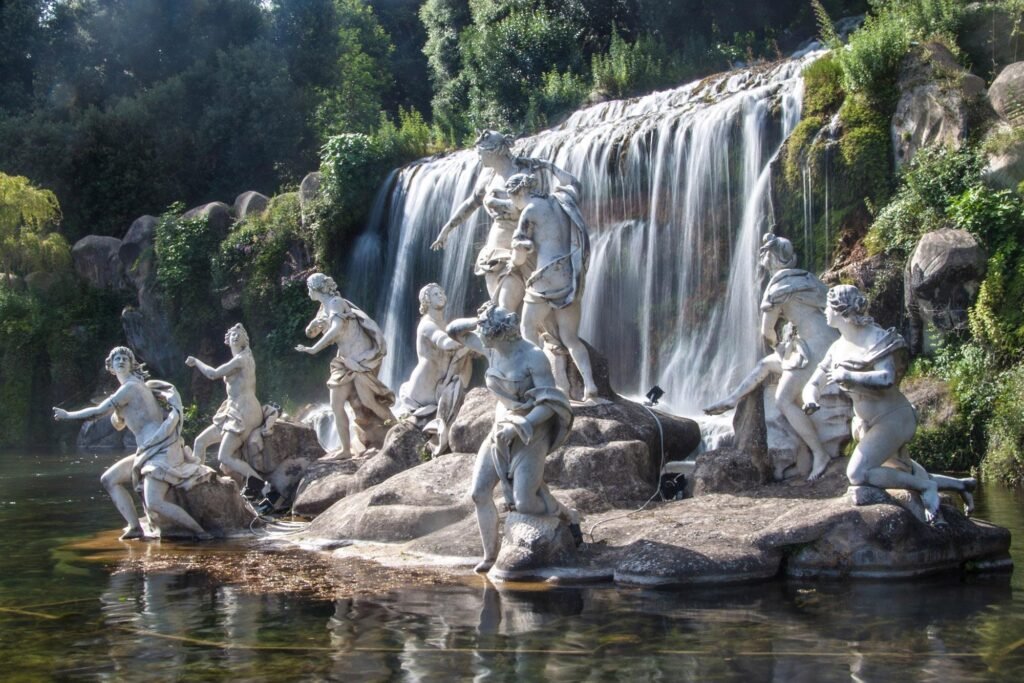
Caserta, located in southern Italy, is a city with a rich history and extraordinary monuments. The town is located only 40 km from Naples.

World of Caserta Monuments:
Caserta Royal Palace – Reggia di Caserta
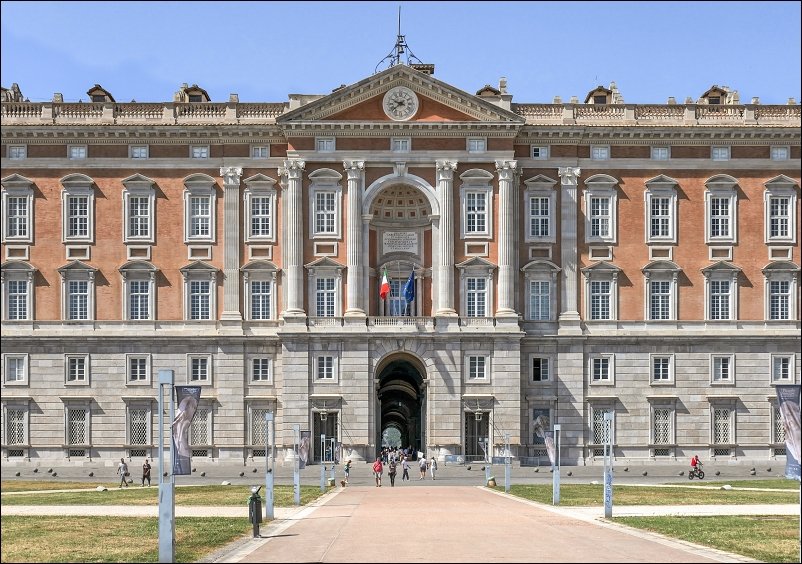
Number 1 on the list of places to visit in Caserta is, of course, the Royal Palace (Residence of the Bourbon Kings). The gorgeous facade is just a preview of the pure luxury that awaits inside. As you ascend the Grand Staircase, enter the ornate Royal Apartments, and stroll through the majestic courtyards, you will be fully awed by the opulence!
The Reggia di Caserta monumental complex includes the Royal Palace, the Royal Park, the WWF Bosco di San Silvestro Oasis and the Caroline Aqueduct.
The construction of the Royal Palace, which began on January 20th 1752, required twenty years of work and the effort of thousands of workers, in the early nineteenth century the exorbitant expense amounted to 4,480,651 ducats.
Interior of the Palace

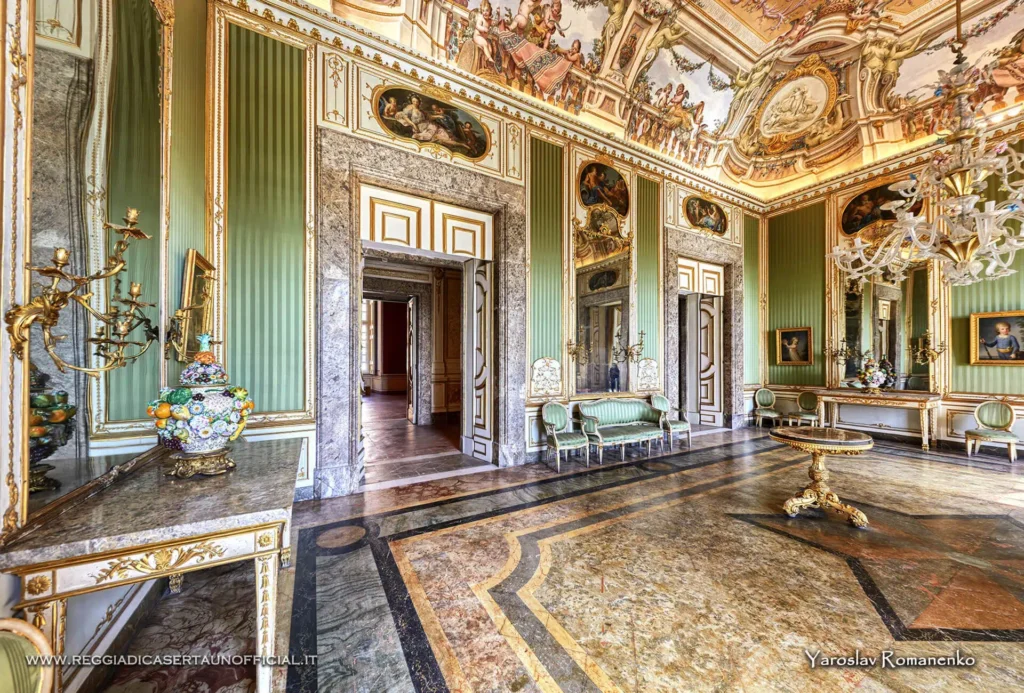

The interior of the palace was lavishly decorated in a very elegant style. The architecture itself also revealed the purpose of the chambers or rooms. For example, the court rooms were white without decorations, the neoclassical style dominated in the libraries, and some chambers were not as refined as others, e.g. those where the queen received guests. Today, although not the entire facility is open to the public, you can still experience its splendor – beautiful chandeliers, frescoes, marble, silks, and the apartments still look impressive.
The English Garden
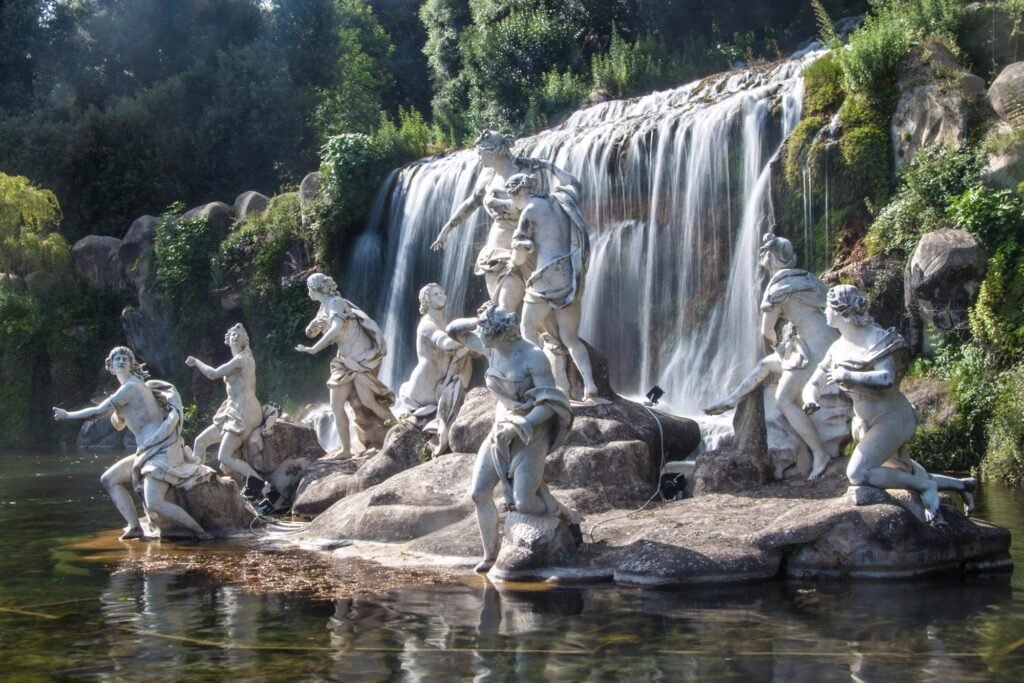
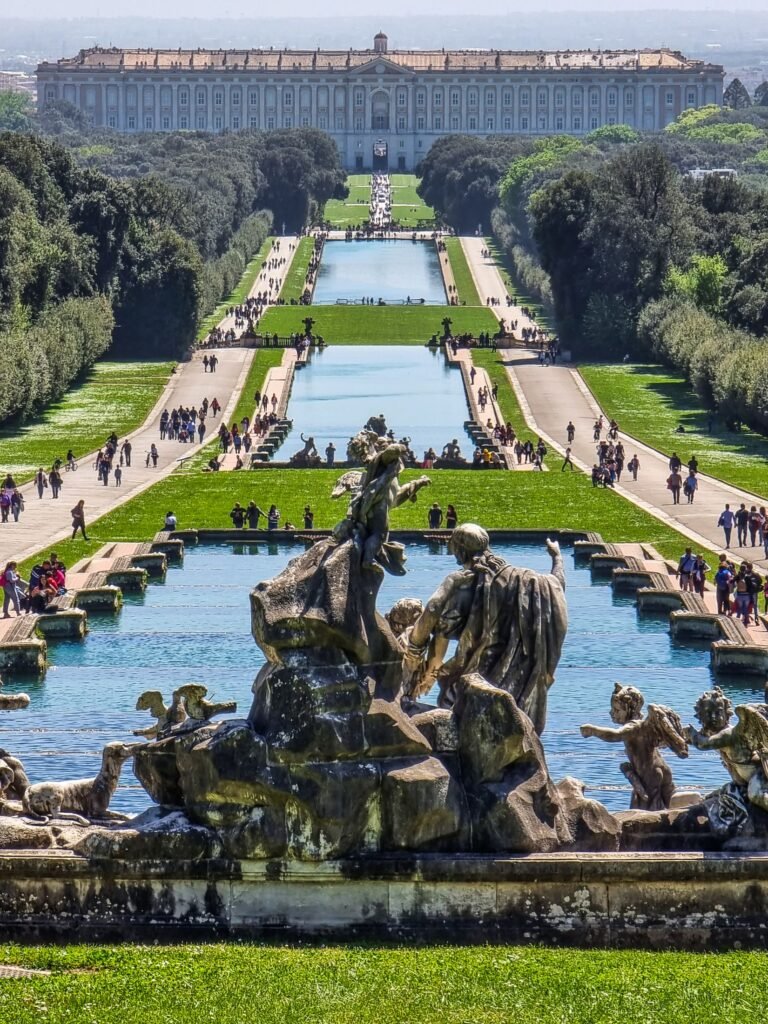
The English Garden located within the complex is one of the greatest, oldest and most important picturesque spaces created in Europe. Hundreds of rare and valuable plants from all over the world were brought to Caserta and they grow there to this day. Walking through such a large green space is amazing.
The English Garden which covers an area of 24 hectares. Area is characterised by natural, hugely evocative scenes which incorporate exotic trees, groups of sculptures, winding paths and artificial ruins to spectacular effect. Be sure not to miss the Bath of Venus with the Criptoporticus, the English Palazzina and the Aperia, once used for beekeeping.
Wonderful fountains complement every park and, of course, they are around the Royal Residence:
- Fountain of Diana and Actaeon (sculptures by Paolo Persico,
- Angelo Maria Brunelli and Tommaso Solari);
- Fountain of Venus and Adonis (1770–80);
- Dolphin Fountain (1773–80);
- Aeolus Fountain; Ceres Fountain.
San Leucio Belvedere

San Leucio is located near the Palace of Caserta. This is another building that is a testimony to the wonderful Bourbon times. Belvedere di San Leucio served as a hunting and summer residence. It was built on the orders of Ferdinand IV. Nowadays, you can still admire the wonderful royal apartments, the silk museum and a collection of antique musical instruments.
Trips From the Tourist Office:
- Caserta Royal Palace day trip from Naples
Place: Naples
Duration: up to 5 hours
Availability: Every day except Tuesday
Electronic coupon accepted
Trip description:
Visit this magnificent architectural complex in Caserta, which includes the Royal Palace and its magnificent gardens! The enormous palace, often compared to luxurious buildings such as Versailles and the Royal Palace of Madrid, was commissioned by Charles VII of Bourbon, King of Naples, in 1752. The palace has approximately 1,200 rooms, a large royal theater and over two dozen royal apartments. Start your journey from Naples, reach the Royal Palace on a comfortable bus and skip the lines with a priority ticket; Once inside, learn more about the life and customs of the ancient nobility. Continue to explore the royal gardens decorated with gushing fountains and lots of beautiful flowers.
Aqueduct of Vanvitelli
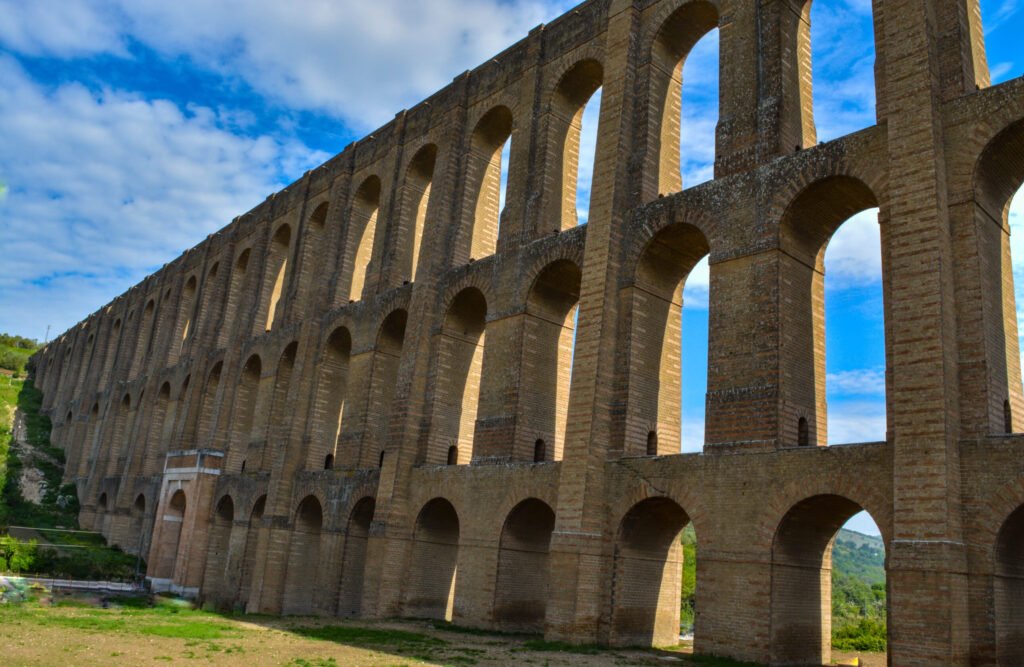
The Aqueduct of Vanvitelli – also known as Carolino Aqueduct in honour of the King Charles III of Bourbon – was constructed in 1753 -1769 with a purpose to bring water to the fish pond, the fountains and the cascades featured in the gardens at the Royal Palace of Caserta. Along the way, it also managed to provide water to a few mountain villages, irrigation to the flatlands and augmenting the flow in the aqueduct that supplies water to Naples.
Campano Amphitheatre
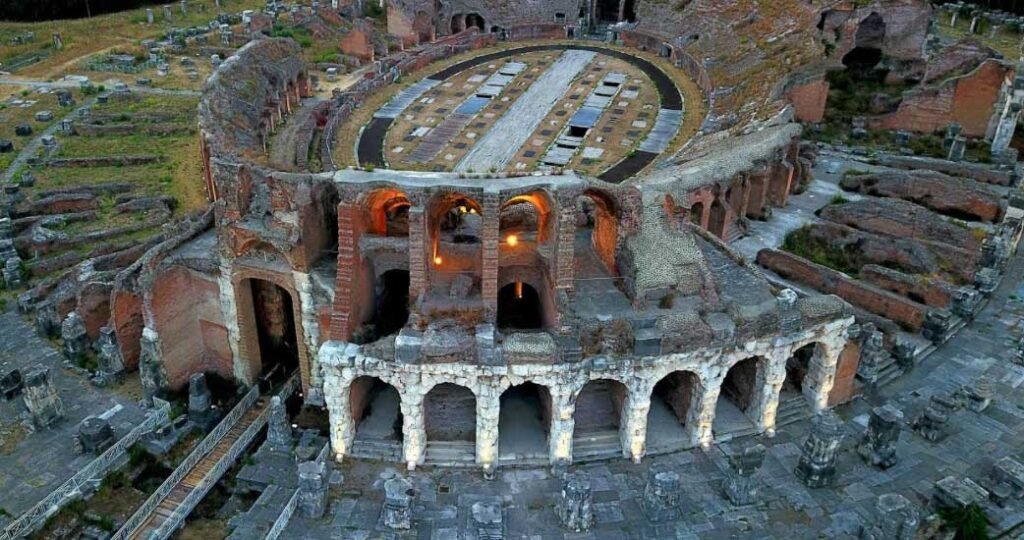
The town of Santa Maria Capua Vetere is a medieval descendant of Ancient Capua, one of the largest and most important cities of the ancient world—famous for its many monuments of Roman times, including the Amphitheater Campano, second only in size to the Colosseum of Rome.
Ancient Capua was founded by the Etruscans in the fifth century BC, and was on the Via Appia, making it the most important city in the area. It was home to, among other things, the famous gladiatorial school that became the scene of the famous Spartacus revolt.
Basilica Benedettina di Sant’Angelo in Formis
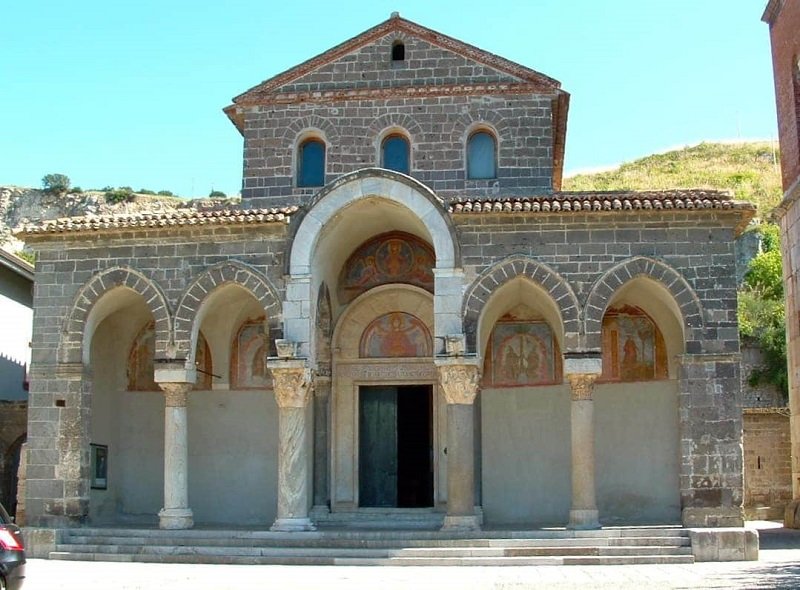
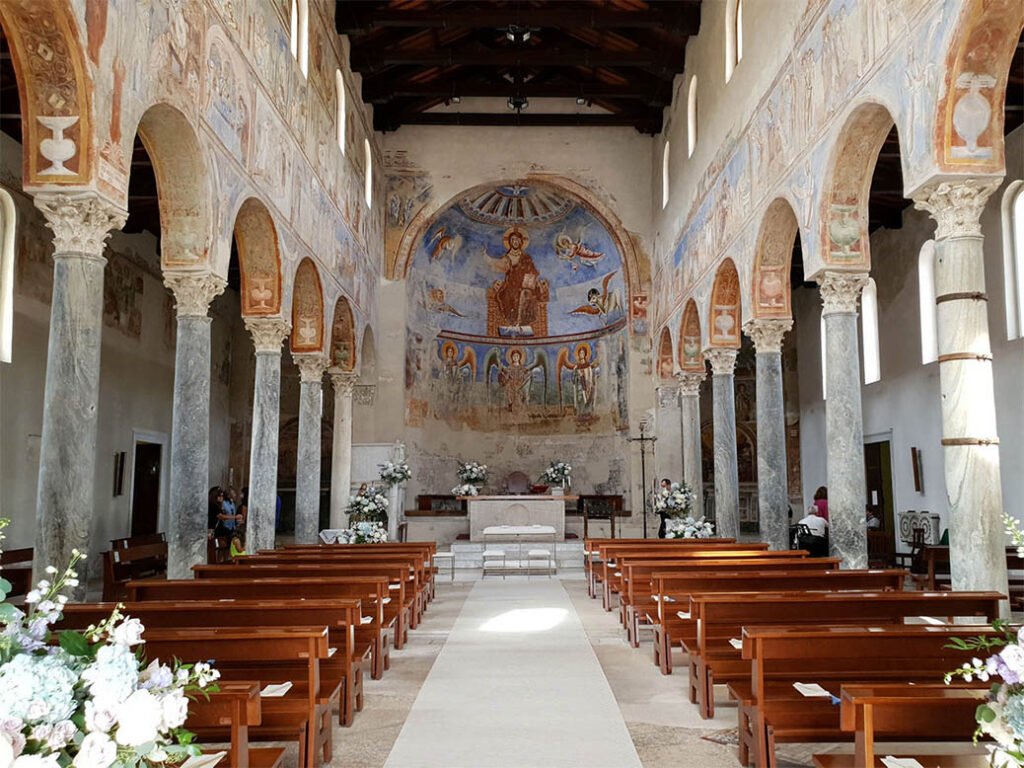
Sant’Angelo in Formis is an abbey in the municipality of Capua in southern Italy. The church, dedicated to St Michael the Archangel, lies on the western slopes of Monte Tifata. The church was built in the eleventh century by Desiderius, the abbot of Monte Cassino, who also rebuilt that abbey. At Monte Cassino the decoration was carried out by Byzantine (Greek) artists hired from Constantinople and the decoration of Sant’Angelo displays a mingling of the Byzantine (Eastern) and Latin (Western) traditions. The frescos were painted by Greek artists and by Italian pupils trained in their methods.
